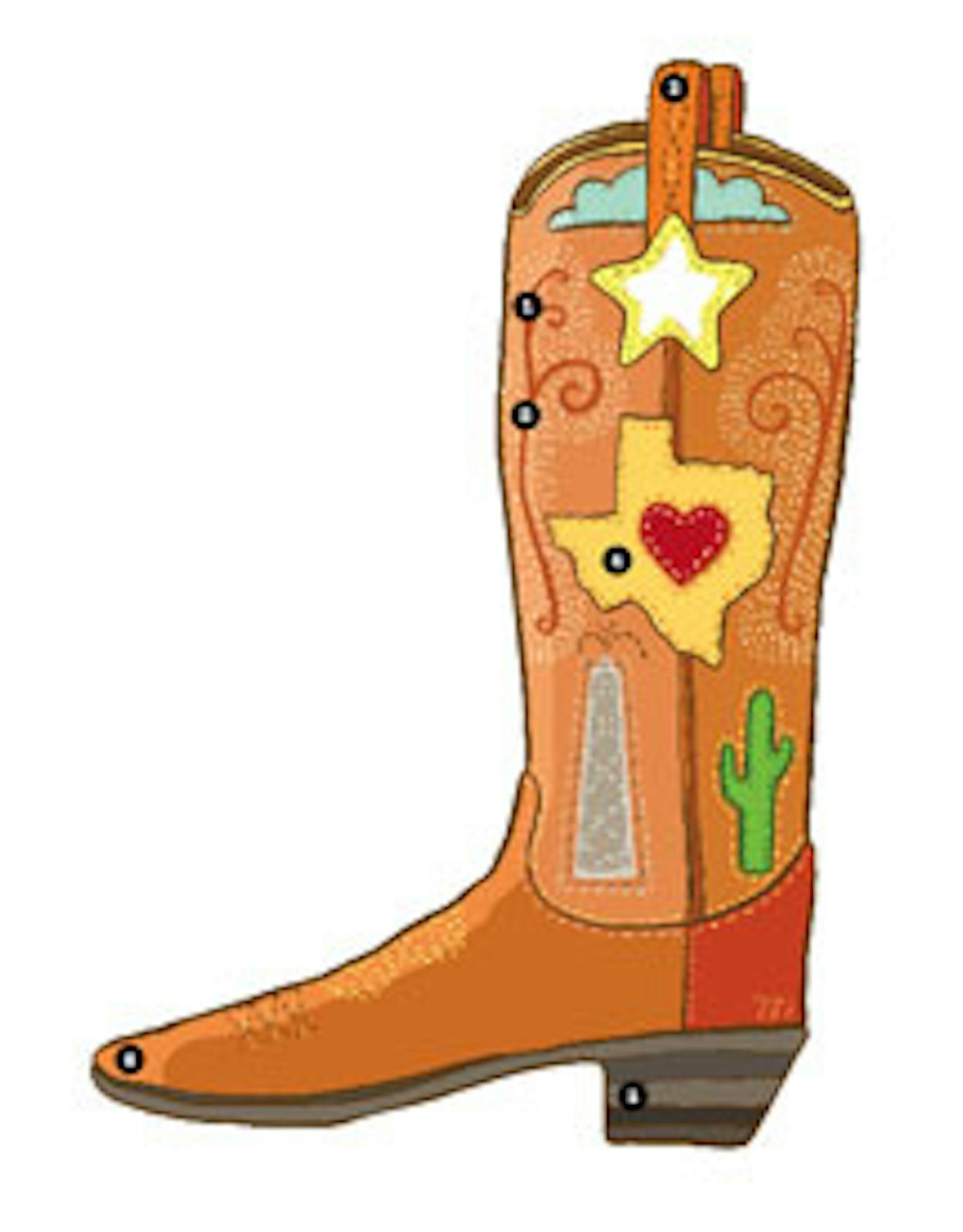1. Your quest for inimitable footwear begins with the leather, so first give thought to your stomping grounds (cattle pen or cubicle?) and your image (rhinestone cowboy ?). Your basic, most traditional option is calfskin. Need extra-tough work boots? Elephant, shark, or bull offers durability. Dress boots? Go with lizard, stingray, ostrich, or crocodile. And then there’s kangaroo. “The cashmere of leathers,” says Nevena Christi, co-owner of El Paso’s Rocketbuster Boots. “Soft, sturdy—and expensive.”
2. Determine the height of the top. Vintage-style cowgirl short-tops, known as peewees, come in at ten or eleven inches—all the better to show off those sexy stems—while buckaroos, which can measure up to twenty inches, protect a working cowboy from brush and bramble. Unless you actually own a horse, stick to the standard: twelve to fourteen inches.
3. Jennifer June, the author of Cowboy Boots: The Art and Sole, will tell you that pulls come in four basic varieties: outside pulls (visible when you lift your cuff), inside pulls (which sit within the boot), mule ears (extra-long decorative loops), or just plain holes. Practical, yes, but also a place for flair: “Add color, a Texas flag, or your initials,” she suggests.
4. Stitching is the most common design feature. You can also request inlays and overlays, colorful cutouts beneath or on top of the boot’s leather. And then there’s tooling, a luxury option. Custom boots can cost $2,500 or more (turnaround time ranges from six weeks to a year). But if you’re spending the money anyway, have fun: Request foxing (overlays on the toe or heel), a collar (decorative leather along the top of the boot), or brightly colored piping (narrow trim on the seams).
5. The average heel comes in at around one and a half inches. But conventions are for ignoring, especially by the fairer sex—who can pull off as much as two to three inches—or by some cowboys, who like the height for better stirrup grip. Most boots are made with underslung heels: “The sharper the angle, the more dramatic and stylish your look,” says Scott Wayne Emmerich, co-founder of the Tres Outlaws boot company, in El Paso. Roper-style heels are the low, walking kind, good if you’re required to follow a corporate dress code.
6. The toe says everything. Pointy is the province of fashionistas and Hollywood; real ranchers gravitate toward a round look. Hipsters rock the box toe. Boardroom types go for the slightly squared-off French style. (Your bootmaker, on the other hand, will refer to different toe shapes by letters such as U, J, or X.) Above all, consider your image. Mosey into your local honky-tonk with broad, round toes, and you say, “I just broke the new palomino.” Opt for ultra-tapered ends, and you probably pronounce “rodeo” “ro-day-o.”








